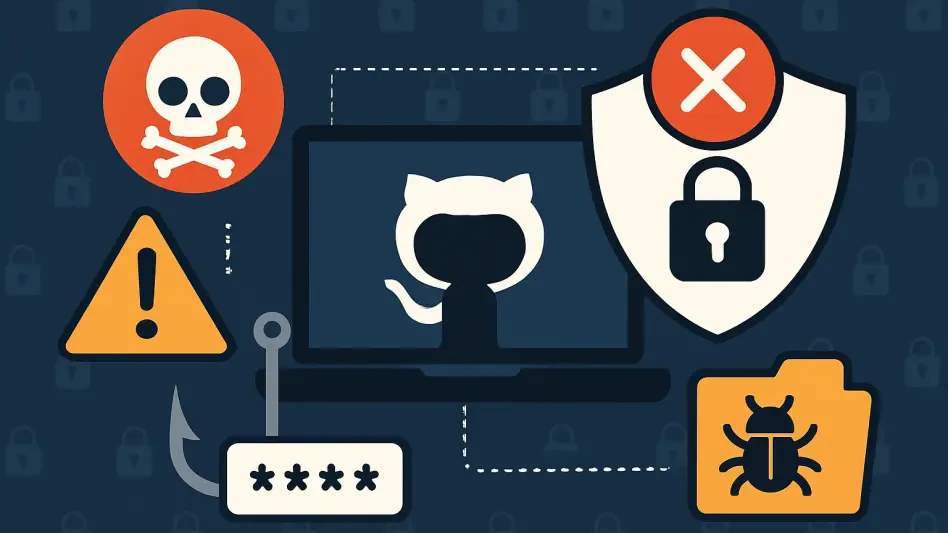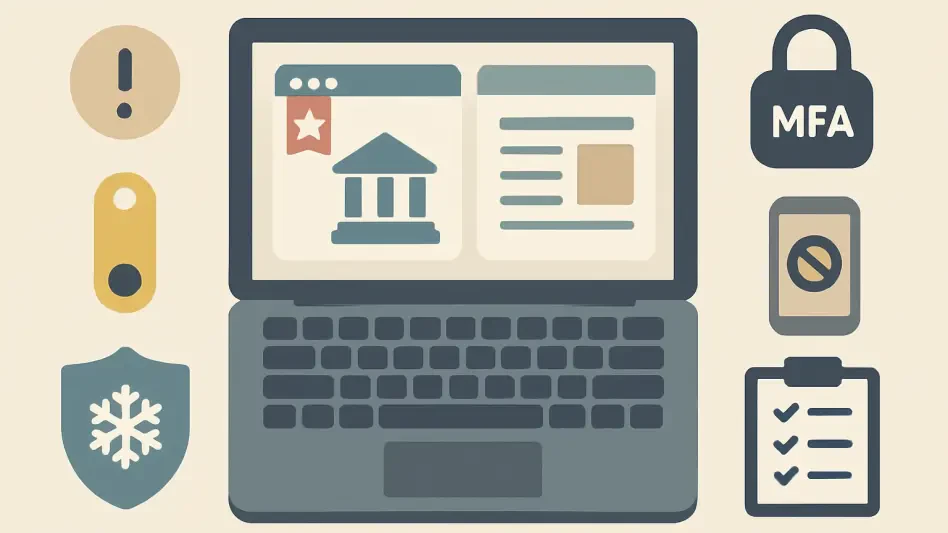Imagine a scenario where a single line of unverified code, pulled from a seemingly benign GitHub repository, infiltrates a major corporation’s software supply chain, leading to a catastrophic data breach affecting millions of users. This is not a far-fetched plot but a growing reality in today’s interconnected development ecosystem. GitHub, the cornerstone of modern software creation and collaboration, has become both an enabler of innovation and a potential gateway for sophisticated cyber threats. This technology review delves into the hidden security risks associated with GitHub, exploring its critical role in the Software Development Life Cycle (SDLC), the vulnerabilities it harbors, and the strategies needed to safeguard against evolving dangers. The aim is to provide a comprehensive assessment of GitHub’s security landscape and its implications for organizations worldwide.
Understanding GitHub’s Role in Modern Development
GitHub stands as a pivotal platform in software development, facilitating version control, collaborative coding, and seamless deployment for millions of developers globally. Its transformation from a simple repository host to a central hub for open-source and proprietary projects underscores its importance in driving technological progress. With features like pull requests, issue tracking, and automated workflows, GitHub empowers teams to innovate rapidly, making it an indispensable tool across industries.
However, this widespread adoption comes with a significant caveat: the platform’s pervasive use has expanded the attack surface for cyber threats. As organizations increasingly rely on GitHub for dependencies, automation, and infrastructure management, the potential for security oversights grows. The challenge lies in balancing the platform’s accessibility with robust safeguards to prevent malicious exploitation.
The stakes are particularly high given GitHub’s integration into every stage of the SDLC. From initial code commits to production deployments, unverified content sourced from public or private repositories can introduce risks that traditional security measures often fail to detect. This review seeks to unpack these hidden dangers and evaluate how they impact the broader technological ecosystem.
Key Security Vulnerabilities in GitHub Usage
Dependency Management and Mutable References
One of the most pressing risks in GitHub usage stems from dependency management practices, particularly the reliance on mutable references such as branches instead of fixed commits. Developers often pull code directly from repositories using package managers, a practice observed in thousands of configuration files across various ecosystems. Without pinning to specific commits, builds become non-deterministic, opening the door to repository hijacking by malicious actors.
The consequences of such vulnerabilities are severe, as compromised dependencies can execute harmful code with the same privileges as the host application. This not only jeopardizes the integrity of the software but also risks exposing sensitive data. The scale of this issue, evidenced by extensive data on affected files, highlights the urgent need for stricter controls over how dependencies are sourced and referenced.
Mitigating this risk requires a shift in development norms, focusing on immutable references to ensure consistency and traceability. Organizations must prioritize policies that prevent the casual use of dynamic branches, replacing them with verified, static commits to reduce exposure to potential attacks.
CI/CD Automation and GitHub Actions
Continuous Integration and Continuous Deployment (CI/CD) workflows, particularly through GitHub Actions, represent another critical vulnerability in the platform’s security landscape. Many workflows reference external actions or scripts with mutable tags, granting access to repository secrets that attackers can exploit. This lack of verification creates opportunities for token theft or the deployment of backdoored code.
Real-world incidents have demonstrated the devastating impact of such flaws, with compromised actions leading to unauthorized access and data breaches. The sheer volume of workflows relying on GitHub Actions amplifies the risk, as automation tools become prime targets for adversaries seeking to infiltrate development pipelines.
Addressing these threats demands rigorous validation of all external components used in CI/CD processes. Establishing secure configurations and limiting secret exposure are essential steps to prevent automation from becoming a liability rather than an asset in software delivery.
Container Builds and Dynamic Code Fetching
Container builds, especially those involving Dockerfiles, pose unique security challenges when unverified code is fetched from GitHub during image creation. The practice of embedding external scripts or dependencies without proper checks can lead to the inclusion of outdated or malicious content, often perpetuated through layer caching mechanisms. Such oversights risk embedding threats that persist across deployments.
Attackers can exploit these weaknesses to facilitate data exfiltration, targeting sensitive information like environment variables embedded in containers. The widespread use of dynamic fetching in container configurations underscores the potential for large-scale impact if vulnerabilities are left unaddressed.
To counter these dangers, verification protocols must be integrated into the build process, ensuring that all sourced content meets stringent security standards. Adopting practices like content hashing and secure registries can significantly reduce the likelihood of compromised code slipping through the cracks.
Emerging Trends in GitHub Security Threats
The complexity of software supply chains continues to grow, driven by GitHub’s central role in modern development practices. This interconnectedness has fueled a rise in supply chain attacks, where adversaries target less obvious entry points to infiltrate systems. The trend reflects a broader shift in cyber threat strategies, focusing on exploiting trust in widely used platforms.
A concerning pattern is the lack of awareness among organizations regarding their full exposure to GitHub-related risks. Many remain focused on traditional dependency scanning, overlooking the diverse ways in which unverified content integrates into their workflows. This blind spot creates fertile ground for attackers to exploit hidden vulnerabilities.
As these threats evolve, there is a pressing need for a paradigm shift in security approaches. Moving beyond reactive measures, the industry must embrace comprehensive governance models that address the multifaceted nature of GitHub’s attack surface, ensuring protection across all development stages.
Real-World Impacts of GitHub Security Breaches
High-profile incidents have brought GitHub security risks into sharp focus, illustrating the tangible consequences of unaddressed vulnerabilities. Cases like compromises in popular actions and utilities reveal how attackers can leverage trusted repositories to steal credentials or leak sensitive data. These breaches often result in widespread disruption, affecting organizations and end-users alike.
Specific examples highlight the dangers of unverified content, where seemingly innocuous code snippets or configurations become conduits for malicious activity. The fallout from such events extends beyond immediate financial losses, eroding trust in software ecosystems and prompting urgent calls for reform.
These case studies serve as stark reminders of the importance of proactive security measures. They underscore the reality that no organization is immune to GitHub-related risks, regardless of size or industry, and emphasize the critical need for vigilance in managing external code sources.
Challenges in Securing GitHub-Hosted Content
Securing GitHub usage presents multifaceted challenges, starting with the lack of governance over dynamic code references. Many development teams prioritize speed and convenience over stringent checks, inadvertently increasing their exposure to potential threats. This cultural tendency complicates efforts to enforce secure practices.
Technical hurdles also impede progress, as existing tools and processes often lack the capability to verify content integrity comprehensively. The tension between maintaining accessibility for collaboration and implementing restrictive security measures creates a delicate balancing act for organizations to navigate.
Additionally, organizational resistance to change poses a significant barrier. Adopting robust security frameworks requires investment in training and resources, which some entities may view as secondary to immediate development goals. Overcoming these obstacles necessitates a concerted effort to prioritize long-term safety over short-term gains.
Future Directions for Enhancing GitHub Security
Looking ahead, several promising strategies offer hope for bolstering GitHub security. The adoption of immutable references stands out as a key measure, ensuring that builds remain consistent and resistant to tampering. This approach, if widely implemented, could significantly reduce the risk of repository hijacking.
Integrity verification represents another critical advancement, providing mechanisms to authenticate content before integration into development workflows. Coupled with the use of internal repository mirrors, organizations can minimize reliance on external sources, creating a more controlled environment for code management.
The long-term impact of these developments could reshape software development practices, fostering a culture of proactive governance. As industry standards evolve, the potential for widespread adoption of secure methodologies offers a pathway to mitigate GitHub’s inherent risks, aligning innovation with robust cybersecurity principles.
Final Thoughts on GitHub Security
This review of GitHub’s security landscape reveals a complex web of vulnerabilities that have permeated software development practices, from dependency management to container builds. Each assessed risk vector demonstrates the platform’s dual nature as both a catalyst for progress and a potential liability when safeguards are absent. The real-world breaches examined underscore the devastating consequences of inaction, while emerging trends point to an escalating threat environment.
Moving forward, actionable steps emerge as vital for organizations aiming to secure their GitHub usage. Implementing strict policies for immutable references and content verification stands out as an immediate priority to curb exposure. Additionally, fostering collaboration between development and security teams promises to bridge gaps in awareness, ensuring that secure practices become ingrained in workflows. As the industry continues to grapple with supply chain complexities, investing in internal solutions like mirrored repositories offers a sustainable approach to reducing external dependencies, paving the way for a safer development future.








